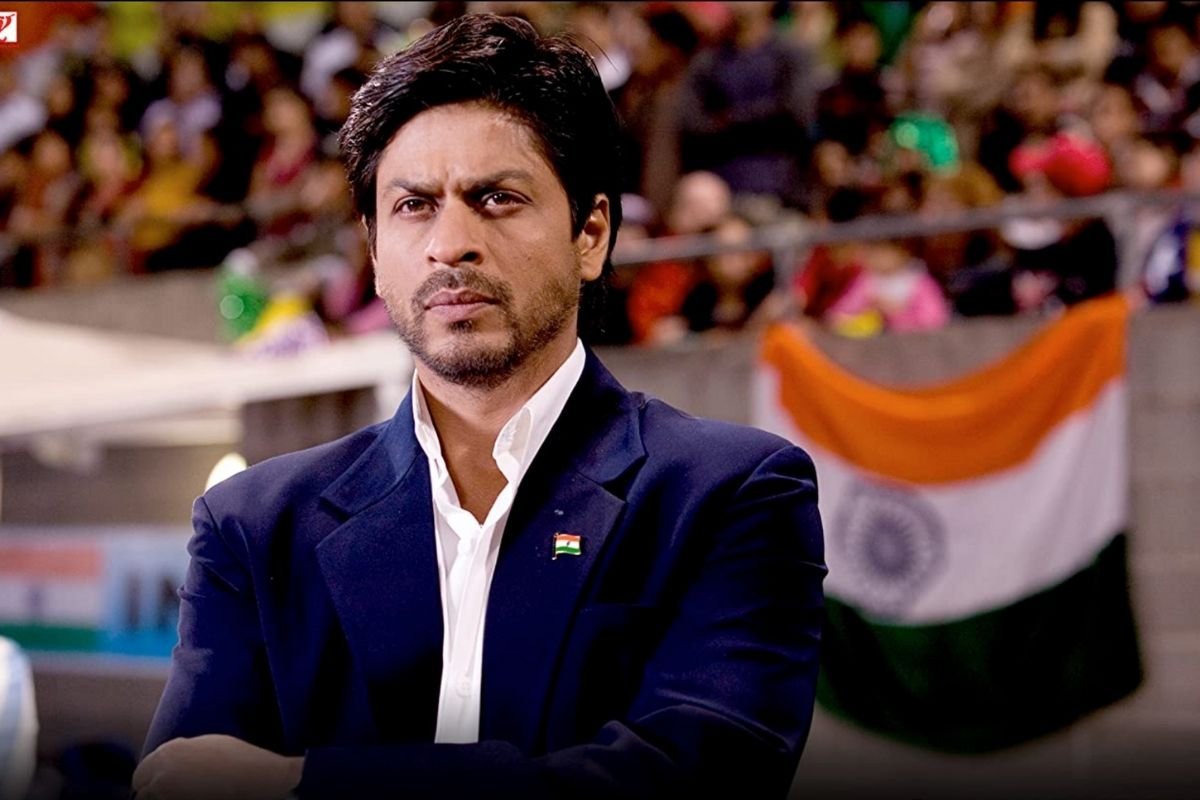Time and again, Hindi cinema has been the mirror that reflects the ideologies of Indian society. The portrayal of honour, pride, and sacrifice for the nation has always been able to touch the ethos aspect and rekindle a flame of nationalism in the hearts of Indians. It also sheds light on the development of Hindi cinema based on contemporary public consciousness.
This Independence Day, Brown brings you a reflection of some nationalist ideas essayed in Hindi cinema that instilled patriotic fervour or made us feel proud about India’s glorious past.
The Era of National Pride (1900 – 1910)
In the 1900s, the earliest cinematic movies were more of newsreels films, primarily documentaries that celebrated the achievements of individuals. These documentaries would be used to inculcate in the minds of Indians a feeling of national pride. One such film was ‘The Return of Wrangler Paranjype‘ (1902), directed by Harishchandra Sakharam Bhatavdekar, which was made in honour of the Indian Mathematician R P Paranjpe, who had been named a Senior Wrangler at the Cambridge University. Other documentaries often showed the ongoing independence movements and tried to channelize nationalism in every community against British rule. Some of these films were ‘Great Bengal Partition Movement: Meeting and Procession’ (1905), ‘The Terrible Hyderabad Floods‘ (1908), ‘Delhi Durbar and Coronation‘ (1911), and ‘Cotton Fire at Bombay‘ (1912).
Fostering Nationalism from a Glorious Past (1910 – 1920)
With the release of the feature film ‘Raja Harishchandra‘ (1913), based on the mythological monarch of ancient India, the link between cinema and nationalism was solidified. Dhundiraj Govind Phalke, one of India’s founding filmmakers, intended to promote the themes of nationalism and economic self-sufficiency through idealised depictions of a mythological past in his films. These films mirrored the perspectives of religious iconoclasts of the time, who saw nationalism as belonging to a ‘splendid glorious era’ and believed that returning to these principles would reinvigorate the freedom movement. ‘Lanka Dahan‘ (1917) and ‘Shree Krishna Janma‘ (1918) are two other notable films by Phalke based on Hindu mythology. They propagated anti-colonial nationalism by anchoring ‘Indian principles’ in a glorified past. These principles were thus framed as morally superior to the British Raj’s values in India.
Nationalist Ideas by Uniting Communities (1910 – 1945)
Parallel to the ideas of the glorious past, the filmmakers were coming up with thoughts of making films that would propagate the feelings of communal harmony. However, not every filmmaker was in support of the principle of collective integrity and unity. Hence, just like the films, Indian Cinema also played a role that was black and white. The film industry was mostly divided along religious lines. However, certain filmmakers, authors, and poets affiliated with the Progressive Writers’ Association, and members of the Indian People’s Theatre Association, aspired to use film to preach communal unity. Films depicting communal divisions, on the other hand, were also made during the period. Nanabhai Bhatt’s film ‘Chalis Karod‘ (1946) essayed Hindu and Muslim characters protesting the vivisection of the Indian map. Members of the All India Muslim League were against the film and damaged the display with blades in certain theatres during this period. Other films with a message of communal harmony were V Shantaram’s ‘Padosi‘ (1941), Nazir’s ‘Bhalai‘ (1943), and G K Mehta’s ‘Bhaichara‘ (1943).
Nationalism Post Independence (After 1947)
Development was a national goal pursued by India immediately after independence, during the era of Nehruvian Socialism. Five-year plans were created to develop industrialization and help the agriculture sector in the country. These plans were designed to build industrialization and support the agriculture sector in the country. Dilip Kumar was portrayed as Nehru’s emissary, advocating his policies. The invention of the ‘Five Year Plan Hero,’ who reflected the ideal in many ways, chiefly because he supported Nehurivian socialism and its principles, brought this brand of nationalism to the silver screen. ‘Naya Daur‘ (1957) depicted the disputes around the spirit of industrialization, which was deemed essential for national growth under Nehruvian socialism. Other realist films, such as ‘Mother India‘ (1957) and ‘Do Bigha Zamin‘ (1953), warned of what could happen if the Indian government did not address rural hardship.
Nationalism as a Result of Wars (the 1960s)
The legacy of Partition, as well as antagonism with Pakistan and China, ensured that nationalism took on a new hue following independence. The Sino-Indian conflict of 1962, as well as the Indo-Pakistan wars of 1965 and 1971, allowed Hindi filmmakers to shape the nation by portraying the external forces as a security threat. Films like ‘Upkar‘ (1967) depict the farmers’ transformation from cultivators to soldiers, two occupations crucial to India’s border and food security. The motto ‘Jai Jawan, Jai Kisan,’ popularised by Prime Minister Lal Bahadur Shastri during the 1965 Indo–Pakistan War, reverberated throughout the film.
Integration as Nationalism (the 1970s)
Communalism was one of the many domestic problems affecting the country during and after the armed conflict decades. The Partition had created a trail of communal conflicts that mainly had gone untouched in cinema. Many people attempted to grasp and depict the situation of Muslims in post-independence India at the time. The film ‘Garm Hava (1974),’ for example, was one of the strongest on-screen endeavours to comprehend the status of Muslims in India following Partition. During this period, the Muslim social film genre began to dwindle. This genre’s last hit was ‘Pakeezah‘ (1972). This fall was primarily due to changes in ideals brought about by modernization, particularly in women’s status. The new adjustments ran counter to the previous image of the begum, who represented all of the traditional feminine values connected with Muslims.
The Era of Post Liberalization (the 1990s)
In the years following economic liberalization, ‘Indian ideals’ in the film were associated with Hindu upper castes and middle-class values. Non-resident Indians (NRIs) were incorporated into the story, and the West was no more portrayed as a challenge to the Indian heroes’ moral and cultural supremacy. One of the earliest films released was ‘Dilwale Dulhania Le Jayenge‘ of this genre. ‘Dilwale Dulhaniya Le Jayenge‘ (1993) was unlike many pre-globalization Hindi films in which the diaspora and non-resident Indians were shunned and regarded as unethical for being ‘un-Indian.’ Despite living in a different country, the diaspora is revealed to be Indian at heart. The characters’ Indian ideals and culture are often asserted.
Diversification of Indian Cinema (2010 to present)
With the films being made on various topics like sports, culture, lifestyle, and biographies, Hindi Cinema has emerged a lot, and with films being diverse and not just restricted to the conventional ways of portrayal to rekindle the flame of nationalism. ‘Chak De! India‘ (2007), ‘Rang De Basanti‘ (2006), ‘M. S. Dhoni: The Untold Story‘ (2016) and ‘Padmaavat‘ (2018) are such examples.
For instance, when ‘Chak De! India‘ was released a sense of pride in women’s hockey was brought up that not only invoked nationalism with people supporting the sport but also engaging themselves more with movies that hit the right chords in terms of story and direction. ‘Rang De Basanti‘, a story of friends trying to bring a revolution by avenging the accidental death of their beloved army friend, itself elicits a revolt and raises a voice against corrupted officials. Similarly, though ‘M. S. Dhoni: The Untold Story‘ was a biopic, it imbibed nationalistic feelings when the audience relived the fervour of the 2011 World Cup. Padmaavat too invoked the ideals of Indian culture by integrating the value of the glorious past.
Hindi cinema has always played a pivotal role in shaping the minds of people and giving a thought process to Indian society. For movie enthusiasts, Hindi cinema offers a platter of tales that depict the moods of the audience and societal ideologies. This article was one such attempt to understand the relation of cinema with the nationalistic ideologies of the nation. Tell us in the comments section if you have discovered any such patterns in Hindi cinema.






2 Comments
Kushagr Gautam
August 15, 2021 at 9:25 am
Man, I did not know many of these. I certainly did not see DDLJ from this perspective.
Vansh Ahluwalia
August 15, 2021 at 3:45 pm
I love how informative the article is. Good work💫